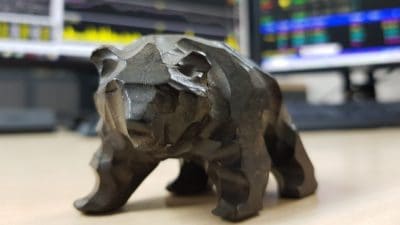Specialist insurer Hiscox (LSE: HSX) has released an upbeat interim management statement that shows that the company is performing well and has received a boost from weaker sterling. But does this mean that it’s now a better buy than insurance sector peer Aviva (LSE: AV)?
Hiscox’s gross written premiums grew by 20.9% across all its segments. This was aided by a weak pound, but even without the effect of currency Hiscox’s premiums increased by 14.3%. This shows that the company’s strategy is working well and it’s delivering on its growth potential.
Despite this strong growth, Hiscox’s divisional performance was rather mixed. For example, Hiscox London Market and Hiscox Re continue to face difficult trading conditions. Margins are evaporating in some areas of the London market, which will have a negative impact on the company’s bottom line. However, with its retail businesses continuing to grow and benefitting from long-term investment in infrastructure and brand, its overall outlook remains positive.
In fact, the firm is forecast to increase its earnings by 20% in the current year. This puts it on a price-to-earnings growth (PEG) ratio of just 0.5, which indicates that it offers excellent capital gain potential. Sterling could continue to weaken for some time yet and carry on boosting the company since uncertainty surrounding Brexit may increase in the coming months. That’s especially the case as the government is set to invoke Article 50 of the Lisbon Treaty next year. This could weaken still further the confidence of investors in the UK economy.
A better buy for now?
Of course, Hiscox isn’t the only insurance company with growth potential. Aviva is expected to increase its bottom line by 86% this year and by a further 14% next year. This puts it on a PEG ratio of just 0.6. While this is higher than Hiscox’s valuation, Aviva also has superior longer-term growth potential thanks to its integration of the acquired Friends Life business. This has progressed to plan and the end result is set to be a dominant player within the life insurance business. Margins should improve due to better efficiencies, while a larger business could lead to greater stability.
Aviva also has a far superior income outlook to Hiscox. The former yields 5.5% from a dividend covered 1.8 times by profit. Meanwhile, Hiscox has a yield of only 2.5% from a dividend covered 3.4 times by profit. Certainly, there’s scope for Hiscox to increase its dividend at a faster rate than Aviva due to its better dividend coverage. However, with such a large difference in yield, Aviva remains the preferred income choice over the medium term.
Although Hiscox has benefitted from a weaker pound, its adjusted performance remains strong. Therefore, it’s a sound long-term buy, although Aviva remains a better overall buy at the present time.







